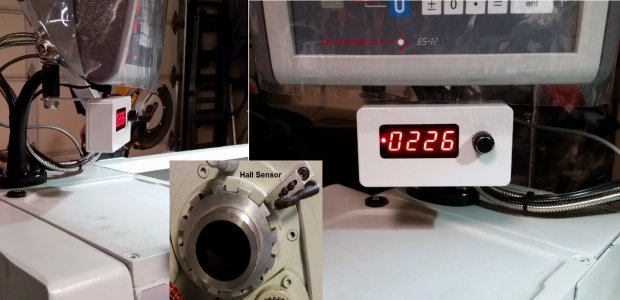Here is an interesting bit of info:
If a single phase motor is moved to a new frequency domain the operation of any rotational switch must be checked. A 60Hz motor in a 50Hz application turning 20% slower may not achieve a speed sufficient to open the centrifugal switch. This would likely result in an immediate burn out.
Acknowledging that the reduction in operating parameters for a 60Hz motor operating at 50Hz is significant, it is NOT "dramatic" for this application. If this motor were operating at full load, 100% duty cycle in a pump or blower application it would be far more pressing. In an intermittent machine application like this I would be reluctant to attribute much, if any, of the problem on design operating frequency.
As far as the centrifugal switch is concerned, these switches are intended to open as soon as the motor achieves positive rotation, maybe no more than 20% of their operating speed; this is well within the reduced speed envelope of a 60Hz motor operated at 50Hz.
Such a high operating current (19.5 Amp @ no load) is indicative of a very high magnetic current in the motor. This can be caused by a)mechanical load, b) a reversed run winding c) a shorted run capacitor, d) shorted turns in a winding or e) a bucking winding (start winding energized).
Without belaboring the various intricacies of each circumstance... a) is eliminated, b&c) would likely result in a locked rotor or trip a breaker, d) is a definite possibility although shorted turns usually result in smoke after a short time, which this hasn't. That kind of leaves e) as the remaining culprit.
To answer your question regarding where the centrifugal switch is, it's usually located in the rear bell housing of the motor. The weighted mechanism is on the motor shaft and the switch resides on a fixed position in the bell housing. They're pretty simple.
I'll be eager to find out just what is the actual problem. As much as I'd like a VFD on my machine, I think I'd spend a little time wrenching on this problem before I threw in the towel if this were in my shop.

Best of luck to you.
Mark


